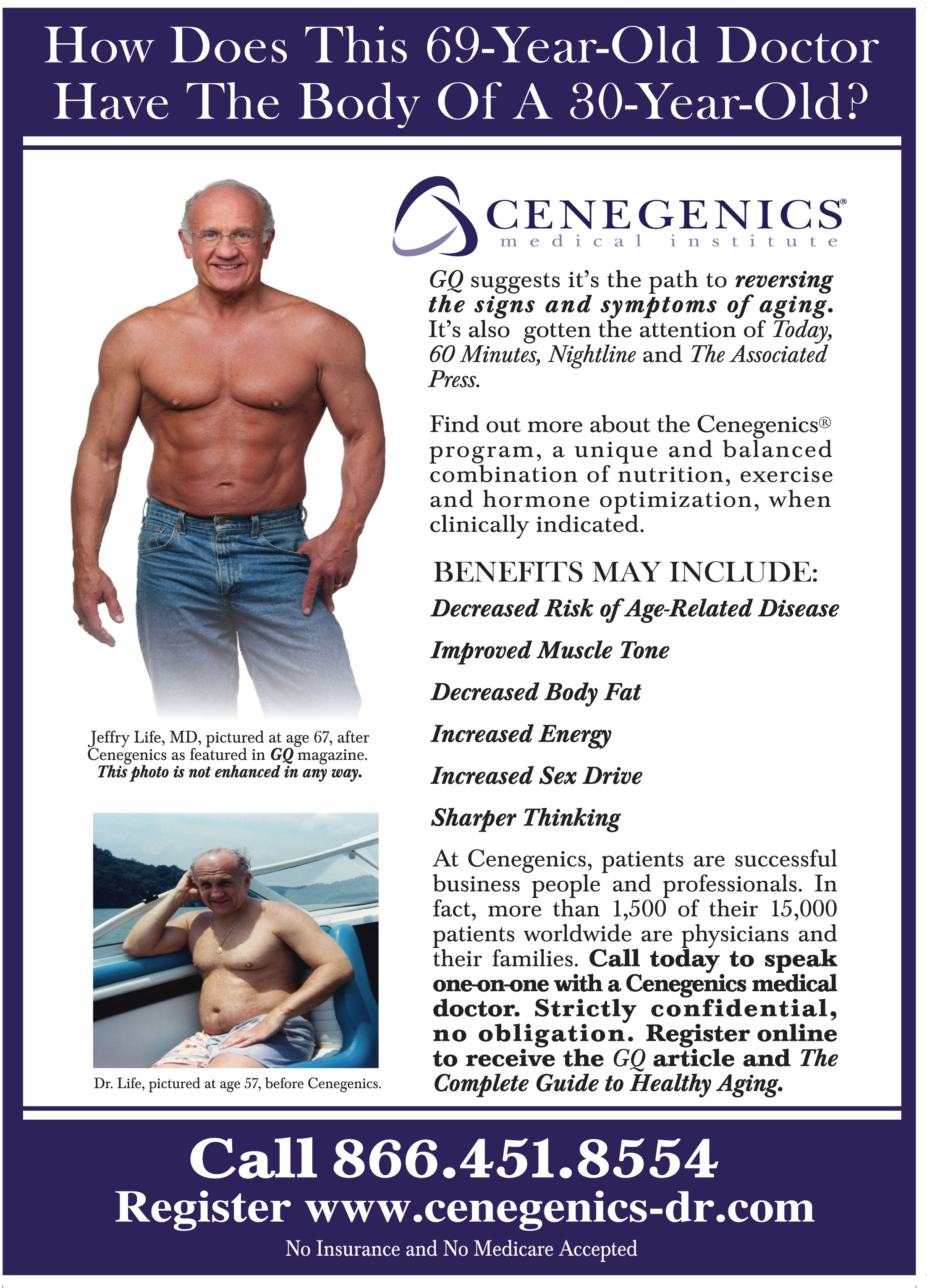In 1936, a Yale University Associate Professor of Chemical Engineering by the name of Clifford C, Furnas wrote a book entitled, "
The Next 100 Years: the Unfinished Business of Science". In Part I, BIOLOGY, he includes a chapter "
What of Death?" in which he talks about what was known about aging and death in 1936... practically nothing. He notes that the life expectancy for a baby born in 1936 was 60. He writes,
"According to the chief statistician of the Metropolitan Life Insurance Company, who should know his mortality if anyone does, an expectancy at birth of of a life of 70 years is not at all unreasonable with our present biological equipment and knowledge and may be expected to come about within a relatively few years." A little farther on, he writes, "
We should be allowed to exist on and on, long after our procreative objective has been reached; yet despite our apparently valiant efforts, we probably have not added one single day to the inherent span of average human life. If you are Nordic, your chances of surviving at an advanced age are better than if you are of Latin extraction. If your grandparents and parents lived to an old age, than the chances are that you will live longer are better than if they have been short-lived, but all the human effort has not stretched the average inherited human lifespan in the slightest. We waste away and slip into senility for no apparent reason. It is customary to say that the body wears out and just quits, but that is no answer. Its worn parts are constantly being replaced by new ones. Every day dead cells leave the body, and live ones take their place. The Sequoia trees of California keep laying down new cells and living indefinitely."
He concludes, "
On the long end of life, there has been no progress. If you ask a good biologist if we will ever know what senility is and if we do, whether we will ever be able to control it and thus postpone death indefinitely, he will just look at you over the top of his glasses. Use "biologist" in the broadest sense to include medical researchers, physicians, botanists, zoologists and all the rest and still you will find no sympathy with the idea. The answer is so far beyond the present knowledge that the expert cannot allow himself even to think about it. He must wait upon the work of the biochemist. Meanwhile, we keep dying and he writes theses upon the life of the earthworm."
One of my reasons for quoting this is to convey the hopelessness of the prospects for influencing the aging process in 1936 (two years after Clive McKay and Mary Crowell published the results of their study showing that calorie restriction prolongs the lives of rats). The received wisdom in 1936 was that how long you can live was 100% determined by your genes, and that three-score-and-ten was probably the upper limit on the average lifespan.
Hopeless as slowing aging may have seemed in 1936, it paled into insignificance compared to the hopelessness of space flight. Aeronautical engineers prated that rockets couldn't work in outer space because they would have nothing to push against. (Apparently, they slept through their undergraduate physics classes.) Although kids like me were atwitter over rocket ships like Flash Gordon's and Buck Roger's, the grown-ups considered space flight to be childish foolishness. By the summer of 1944, the highest that Robert "Looney" Goddard had gotten any of his liquid-fueled rockets to fly was 11,000 feet. An artillery piece could lob a shell higher than that.
Another "show-stopper" was the problem of containing the burning fuel in a rocket motor. Tungsten might have taken the temperatures, but incandescent oxygen would have caused any metal to catch fire.
That all changed in September of '44 when the first V2 landed on London. Here was a huge, single-stage rocket that could attain a speed of a mile a second while carrying a one-ton payload. The "big people" around me still didn't "get it". After all, the V2 had a range of 75 miles, no greater than "Big Bertha", the giant 75-mile German gun that shelled Paris in World War I. It's 239,000 miles to the moon. But of course, scientists and military planners understood the differences and grasped the potentialities.
The same situation existed with respect to "atomic" energy. In 1939, it took a cyclotron and a huge energy investment to smash an atom or two. Only science fiction writers fantasized about atomic energy. (Hahn and Strassman's 1939 discovery that the Uranium 235 atom could be split with slow neutrons didn't reach public awareness until the end of World War II, at least in my universe of discourse) Unbeknownst to the world, the first nuclear reactor went critical under the grandstands of the University of Chicago's Stagg Field stadium on December 2nd, 1942... only six years after Dr. Furnas published his book, "
The Next 100 Years". When the first "atomic" bomb exploded over Hiroshima on August 6, 1945, it took the world by storm. Even so, the headline, "
Bomb Destroys City" didn't register that night with my mother and her friend, Mrs. Moore.
To me, this is so reminiscent of the current situation with respect to anti-aging research and prospects. The same nay-sayers and ankle-biters are still gnawing away at pioneers like the founders and us communicants of Longecity. At the same time, we've come so far and matters are moving so fast. One enabling technology that (I believe) is profoundly affecting everything is the existence of the Internet. The Internet is ramping up around the world, and its impact upon scientific progress must surely be revolutionary. Twenty years ago, as a research physicist, I was limited to whatever was available in our local library, and to capture hard copy, I had to feed dimes into the library's Xerox copier and manually copy everything I wanted to take home. Communication was by long-distance telephone or by snail mail. Interaction with other researchers occurred at conferences after I had presented my own "transportation paper", and could pay attention to what else was going on.
Over the past year, new products like Niagen, MitoQ, and Longvida curcumin seem to be appearing at a breath-taking rate. In the meantime, there are evidence-based ways of slowing human aging to which, at three months south of 85, I can personally attest. And new strategies for stretching out aging are arriving at a pulse-pounding pace. Like what? Like high-intensity interval training. Like
Josh Mitteldorf's suggestion that we, viz., get out every hour or so and run lickety-split around the house because we need to keep moving all day, even after we've had our daily workout. Like the role of high-flavenol, minimally processed cacao mixed in with our matcha green tea. Like the
dose-dependent reductions in all-cause mortality that attend the daily consumption of a palmful of walnuts.
When I was a child back in the 1930's, we kids bounced off the walls, but no adults exercised beyond walking places now and then. I suspect adult exercise would have been deemed unseemly and juvenile, although I never thought about it, and never asked. Older adults would probably have been afraid to exercise beyond a walk in the park. In any event, although exercise was considered to be healthy for us, there was no quantitative evidence linking exercise to any kinds of health outcomes. Smoking was considered to be an unhealthy habit, but there was no evidence tying it to lung cancer or to heart attacks.
Fresh fruits and vegetables would have been available only for a short time in the summer. Their nutritional content may have been higher than what's typical today, but we only had access to them when they were "in season". The rest of the time, we had to eat canned or dried foods. We kept potatoes in the potato bin in the fruit cellar, and some people had dried apples. Frozen food in the home didn't arrive until the 1950's. Fruit juices weren't available other than in canned form. We got an orange in our stockings at Christmastime. Bread and cookies would spoil after a few days in the breadbox. Sugar was considered to be bad for your teeth and to represent empty calories, but unless you had "sugar diabetes", sugar would do no harm.
The point is: even if we'd wanted to eat differently than we did, we wouldn't have had a choice.
Heart attacks, ulcers and high blood pressure were attributed to stress. Nobody had a clue to what caused the degenerative diseases of aging. Alzeimer's disease was lumped in with senile dementia, and it happened to a lot of people (but not everyone) when they got older. Ditto for Parkinson's disease (the palsy). Rheumatism (arthritis) was another unavoidable concomitant of aging. Cancer was terrible, but there would be a cure for cancer by the time I reached my majority in 1950. Infections (e. g., TB... "the white plague") were the leading cause of death until penicillin became available after World War II. If you want an example of an anti-aging breakthrough, consider dentistry. Nobody around me knew about the importance of getting tarter removed twice a year at the dentist's office. By the time people reached their 50's or 60's, practically all of them had "doggy breath" false teeth.
I believe that we've come a long way and that we're moving at flank speed. Among other game-changers, I believe the arrival of the Internet and its bandwidth improvements are revolutionizing various kinds of personal and professional interactions, along with the creation of a global village. I've recently been reviewing some of the literature regarding the effects of exercise, diet, stress reduction, and other interventions on all-cause mortality, and inferentially, on "health spans" and life spans. The published results appear to be pretty dramatic. One
Oxford University metastudy arrives at ratios of all-cause mortality of 5-to-1 to 10-to-1 between lowest-risk subgroups and highest-risk subgroups in the studies they've reviewed. They note that "
The big effect is smoking - both on overall mortality, and especially on lung cancer." In another study of all-cause mortality, the National Institute on Aging's
Women's Health and Aging Study, of 713 community-dwelling women between the ages of 70 and 79, women in the most-active group and highest tertile of serum caretenoids had about
1/8th the 5-year mortality rate of women in the least-active, lowest-caretenoid group. (Of course, correlation doesn't guarantee causation.)

























































